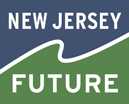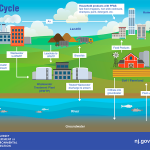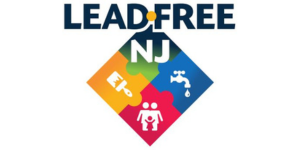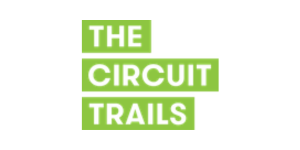New Jersey Future Blog
More Than Mailers: Keys to Effective Outreach and Communication for Lead Service Line Replacement (LSLR) in New Jersey Communities
April 1st, 2025 by New Jersey Future staff
By Deandrah Cameron, Policy Manager, and Ben Dziobek, Community Outreach Specialist
New Jersey Future’s Funding Navigator team has developed expertise in supporting water systems and municipal leaders in navigating the complexities of lead service line replacement (LSLR) funding, outreach, and communication. Meanwhile, the Jersey Water Works Lead Service Line Implementation Work Group and Lead-Free New Jersey address the technical and logistical aspects of LSLR. Effective communication and community outreach are critical aspects of a successful LSLR program. In this blog, we’ll highlight key strategies and best practices for communication and outreach that can improve participation rates and build customer trust.
Stakeholder Engagement and Education
A successful LSLR program requires a drinking water system to effectively communicate with customers, municipal leaders, community advocates, property owners, and occupants at every step in the replacement process, from inspection to post-replacement sampling. Lead affects the nervous system, and the impact can sometimes be hard to quantify and invisible. Customers may not understand the health implications if a lead service line serves their home or the importance of cooperating with inspections to determine the status of their service line, which could be a lead, copper, galvanized, or even a lead-lined galvanized pipe. Moreover, since water systems in New Jersey were not previously responsible for the customer portion of the line, service line inventories are mostly incomplete, and the service line composition is likely to be unknown. Communicating to residents about pending service line inspections and/or removal is crucial to increasing participation and consent, particularly regarding the customer-owned portion of a lead service line.
Effective and early communication ensures residents’ trust and confidence in the water system. As we’ve seen in crises like Flint, Michigan, or Newark, New Jersey, when there’s a high level of concern regarding lead in drinking water, customers may lose trust in the water system if key information is not relayed promptly. Drinking water systems need to educate customers, elected officials, and key stakeholders in a manner that empowers customers and key officials to take action. Beyond initial outreach, water systems should continue building trust and maintaining engagement through frequent, transparent, and consistent messaging.
Strategic Messaging and Outreach Campaigns
Direct communication in the customer’s preferred channel or method of communication is essential for consideration. Both paying and non-paying customers need to be informed about the risks associated with lead contamination, the benefits of LSLR, and the steps to ensure their waters’ safety. Direct communication through preferred channels helps build trust, address concerns, and encourage participation in the replacement process. Water systems must consider adapting their outreach strategies, which could differ across service areas, especially for systems serving multiple municipalities.
Thorough research and review of prior campaigns are necessary to increase the impact of outreach campaigns. Understanding lessons learned such as those shared in this new report, as well as identifying best practices, and assessing the success of different communication channels, can help refine strategies and improve customer engagement. Incorporating key service area demographics and preferred communication trends enables water systems to leverage these insights to improve future outreach efforts and meet communication targets. Engaging hard-to-reach populations is crucial in LSLR outreach campaigns. Certain population groups, based on culture, language barriers, location, or socioeconomic status, may lack access to or utilize different means of communication that don’t fit the general patterns the service area uses. For instance, some individuals may not use social media, have internet access, or speak the dominant language of the service area, making it challenging for them to receive critical information about LSLR. To effectively engage these populations, water systems must develop specialized outreach campaigns that cater to those unique needs and communication barriers.
In Atlantic City, the Funding Navigator team has taken a different approach to increasing response rates for lead service line identification by strategically designing mailers in multiple languages. Recognizing that regulatory lead notices often go overlooked, we combined them with a more visually engaging self-reporting form in a single mailing. By using bold colors as a visual cue for urgency and ensuring the materials were accessible to diverse communities, we made it easier for residents to understand the importance of checking their service lines and taking action. This “two-for-one” approach maximized efficiency—ensuring compliance while driving more participation in the self-reporting process.
Hard to Reach Populations
The importance of targeted outreach to hard-to-reach populations cannot be overstated, as lead exposure poses a significant public health risk. Identifying these populations and creating a tailored approach to delivering health education and replacement services is essential. This may involve partnering with community-based organizations, using culturally sensitive messaging, providing multilingual support, or leveraging alternative communication channels such as print media, community events, or door-to-door outreach. These proactive steps champion an inclusive approach to outreach. This way, water systems can ensure that all residents, regardless of their background or circumstances, receive the information and support they need to stay safe from lead contamination.
Well-established community groups play an essential role in disseminating information on local issues. They may cut across different population groups, including older people and immigrants who face language barriers. Building partnerships with organizations connected to hard-to-reach populations is crucial, enabling information delivery to individuals already within their network, fostering trust, and encouraging participation. The importance of partnership becomes especially instrumental for programs utilizing customer surveys to improve inventories. Additionally, employing a variety of delivery methods for information is crucial.
Effective Communication Methods
Door-to-door canvassing, for instance, allows for personalized interaction and can be particularly effective in reaching residents who may not have access to digital platforms. Choosing the right “messenger” is necessary to open the doors. Drinking water systems should think critically about partnering with community leaders and groups valued as trusted messengers and, most importantly, members of the communities they serve. Even so, other delivery methods offer distinct benefits, such as social media announcements, presentations, door hangers, flyers, posters, T-shirts, ads, and billboards. Social media announcements, for example, can rapidly disseminate information to a large audience, while visuals can enhance the message and capture attention. Town halls provide an opportunity for in-depth discussion and Q&A sessions. Multilingual door hangers, flyers, and posters offer a tangible, offline presence, while T-shirts and ads can serve as conversation starters. Billboards provide high-visibility messaging. By leveraging multiple delivery methods, community organizations can ensure their message reaches the widest possible audience, encouraging participation and driving engagement. Utilizing community surveys to prompt customers to self-identify lead service lines is a great way to educate consumers and accelerate lead service line inventories. Customer surveys may supplement traditional methods and prove particularly useful where there are challenges in accessing private property for lead service line inspections and replacements, such as rental units. Additionally, to maximize participation, consumers typically require instructional information on visually inspecting a service line or performing scratch tests. Community meetings are a great way to conduct such training and educational outreach.
New Brunswick: A Case Study in Community-Led Mapping
In New Brunswick, we’ve seen firsthand how student-led mapping initiatives can play a crucial role in addressing the challenges of lead service line replacement. Ensuring accurate service line inventories has been a persistent issue with so many rental properties and off-campus housing units. Many landlords and tenants were unaware of their pipe materials or hesitant to engage with municipal authorities.
To bridge this gap, NJDEP’s Watershed Ambassador Program, along with student volunteers from Rutgers University, in partnership with NJF’s Funding Navigator team and New Brunswick Municipal Utilities Authority (NBMUA), are taking the lead to begin conducting door-to-door outreach, surveying properties, and helping to identify and document lead pipes in these high-risk areas. Using simple tools like visual inspections and in-person resident surveys, students will collect crucial data that has the potential to accelerate data collection and foster deeper public trust.
Beyond mapping, the initiative also is an opportunity for education. Students are informing others of the risks of lead exposure, and helping residents understand the lead service line replacement process by connecting them with available resources. Their involvement has shown that when local communities, educational institutions, and advocacy groups collaborate, we can overcome barriers to participation and ensure that no household is left out of the replacement effort. With successful partnerships in New Brunswick, the Funding Navigator team is also working to expand this model to Stockton University Atlantic City.
Closing
Ensuring the success of lead service line replacement efforts requires more than just technical solutions—it demands strong community engagement, clear communication, transparency, and a commitment to equity. By learning from case studies like New Brunswick, where student involvement is helping to bridge gaps in data and outreach, and Atlantic City, where strategic, multilingual mailers increased self-reporting, municipalities can develop more effective, people-centered approaches. As New Jersey moves closer to its goal of replacing all lead pipes, the role of communities in shaping and supporting these efforts remains essential.
Related Posts
Tags: community, community engagement, drinking water, equity, health, lead in water, lead service line replacement, public health, water systems
















